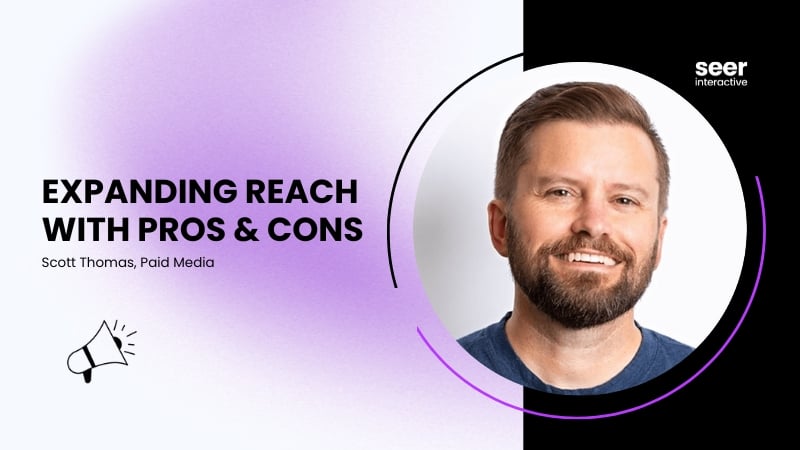In journalism – and writing in general –, the five Ws (and one H) are basic tenants of a complete report or analysis. If you're missing any one of these elements, you don't have a complete picture of what has transpired. The same applies to us in the PPC industry. If we can't answer these six basic questions, we can't say that we have the most solid grasp on our accounts and that our performance is as good as it could be. Fortunately, we have the tools at our disposal to answer these questions, so let's take a look at the questions you should be answering to make the most of your PPC accounts:

WHO – Demographic Report
In an ideal world, we'd know who we are trying to reach as well as who we are actually reaching. Your client should be able to answer the former, but the latter we have to figure out ourselves. For standard search campaigns, this can be difficult (if not impossible) to figure out. But if you're running on the Display Network, you've got the help of the Demographics report under the dimensions tab. Here you can see information about the domains to which your ads have been served, as well as information such as age and gender of users that saw your ad. This data is limited because it is pulled from websites that collect member data and elect to provide it for Google, but can still be useful to get an idea of whose eyes are seeing your ads. If you're running on Facebook or LinkedIn, you've got even greater control over who sees your ads through their very targeted demographic bidding options.
 WHAT – Search Queries
WHAT – Search Queries
Knowing exactly what users are searching for is one of the greatest assets we could have. We can figure this out using regular search query reports, which provide the exact words users typed into the search box that triggered your ad. Use these reports to create a negative keyword list of words that don't apply to your client AND to come up with new ideas for terms on which you should bid! Another way to answer the "What" question is paying attention to auto-complete. Start typing some of your terms into the search box and see what it suggests to complete it. Use Soovle to test this out on multiple engines simultaneously!

WHERE – Geographic Analysis
Where are all these clicks, impressions and (hopefully!) conversions coming from anyway? You can figure it out by utilizing the geographic reports available to you in AdWords and Google Analytics. You can look as broadly as country-level or as narrowly as city-level. Use the information to figure out where your ads perform best and take the opportunity to separate those locations out into their own campaign so you can bid higher on them. Conversely, look for locations where performance is poor and separate them out so you can lower bids; all without affecting overall campaign performance everywhere else!

WHEN – Day-Parting Analysis
Knowing when users are searching for your clients' products or services is another one of the most valuable pieces of information we're lucky enough to be able to find out. Using AdWords or Analytics, you can pull reports showing performance on each day of the week. You can go even further and pull a report that shows performance during each hour of the day. That's pretty huge! If your analysis shows that performance drops way off over the weekends, you can set your campaigns to only run during the work week. Similarly, if you're losing money by showing ads during the overnight, you can set your campaigns to pause nightly and resume in the morning. This can help you save money and improve overall performance metrics.
 WHY – Google Insights
WHY – Google Insights
"Why" is one of the harder questions to answer, mostly because we're not privy to exactly what is going on in the heads of our audiences. Fortunately we have ways of making informed guesses as to why our performance fluctuates as it does. If you notice a big spike or dip in performance, ask yourself what's going on in the world that may have caused it. Saw a spike and your client provides clinical services? Well, if it's flu season, you can probably guess that's why your search volume jumped up. Use Google Insights to figure out less obvious causes by searching for some of your search terms where you saw jumps in volume. News outlets can also be a valuable tool on figuring out what may have caused a performance spike, particularly when it's concerning local campaigns.

HOW – Visitors (In Analytics)
Knowing how users visited and interacted with your landing can be very helpful in improving conversion rate. Using the Visitors tab in Google Analytics can help you in crafting your landing page. Here you can see which browsers, screen resolutions, flash versions, operating systems, languages and more visitors are using when they get to your landing page. Using this data you might find that a large number of visitors are using a screen resolution that puts your form below the fold! Or you could find out that a lot of your potential converters are using a browser in which your landing page is not optimized! Put this information to good use to help refine and improve your landing page, and hopefully help encourage additional conversions!
So those are the six big questions you should be asking yourself whenever you're looking at your account's performance. If you can answer all six, you have the keys to optimizing your campaigns to help drive more clicks and conversions. But these are just the basic questions you should be asking, what other questions do you find yourself asking when you're optimizing your accounts? Let us know in a comment!

